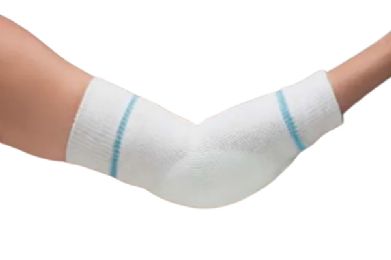
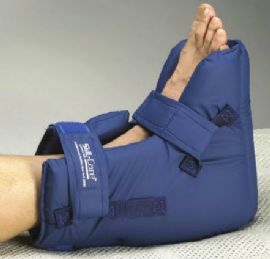

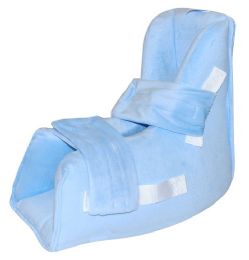
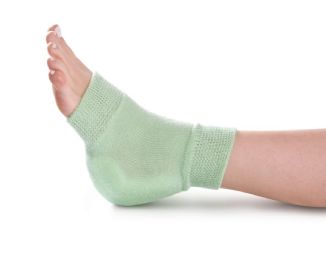
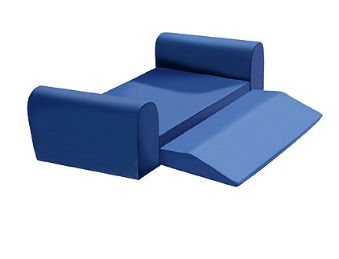
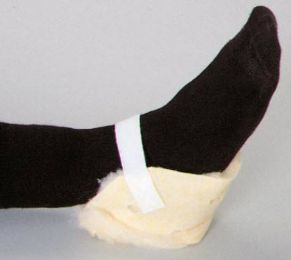
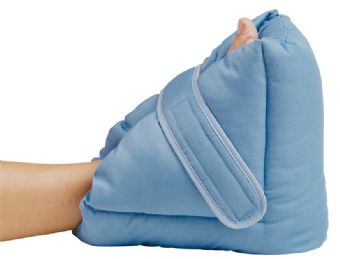

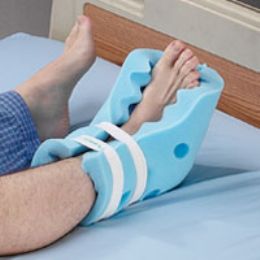
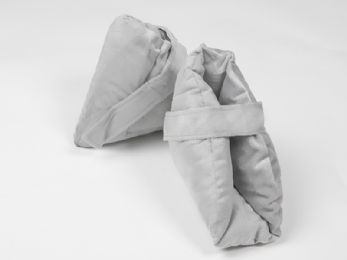
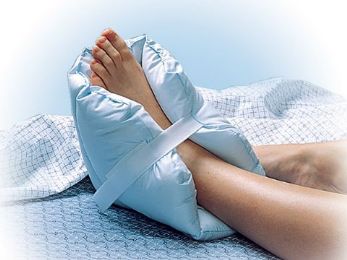
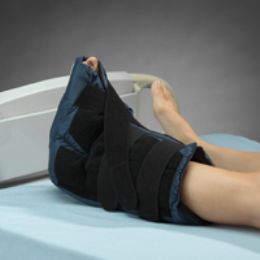
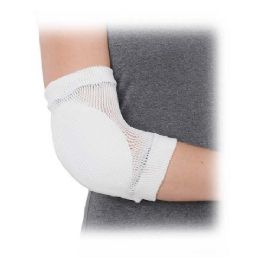
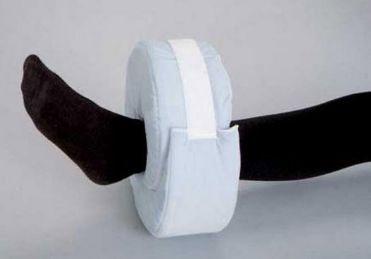
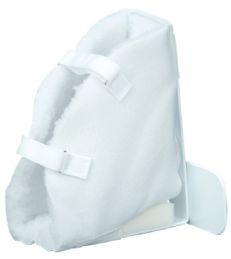
How do Heel Protectors Help with Pressure Ulcer Prevention?
Because the posterior heel is only covered by a thin layer of skin and fat, our heels are particularly vulnerable to skin breakdown. When the human body is supine, all of the pressure of the lower legs and feet rest on the heels. With their inherent lack of muscle tissue to absorb the stress, heels are one of the first places on the body to start breaking down under this pressure, which often leads to constant irritation and then the development of a painful pressure ulcer. Representing approximately 1/3rd of all acquired pressure ulcers, the prevalence of heel pressure ulcers has been estimated to be as high as 25% in acute and long-term care settings. One recent study found that 43% of hospital-acquired pressure ulcers (HAPU) at one hospital were on patients' heels.
Aside from being annoying and extremely painful, pressure ulcers can be hard to treat, resulting in increased morbidity and mortality, and in some cases, amputation of the affected limb. However, recent research confirms that including a heel protector protocol with early, aggressive implementation of other pressure-relieving devices greatly reduces the occurrence of heel pressure ulcers. While immobility remains the most important risk factor for developing pressure ulcers (87%), other risk factors include malnutrition, diabetes, circulatory disorders, peripheral vascular disease, arteriole disease, metastatic cancer, advanced age, obesity, anemia, sensory deficiencies, dehydration and decreased mental/cognitive abilities.
It is important to note, however, that even 'least risk' patients require protection against the development of pressure ulcers. While high risk individuals may develop pressure ulcers in as little as two hours in an immobile, supine position on a regular support surface, new research studied patients hospitalized for total knee replacement surgery and hip fracture surgery over a two-year period and found that of those who had manifested hospital-acquired pressure ulcers, 91% were in the 'least risk' category.
How do Heel Protectors Help with Foot Drop?
As a gait abnormality, foot drop is generally regarded as a symptom of a variant root cause rather than as a disease in itself. Characterized by impaired ability or inability to raise the toes or raise the foot from the ankle, this condition is often temporary, occurring in one or both feet. More permanent foot drop conditions are relative to the extent of paralysis or muscle weakness that has developed. Foot drop can be caused by many various factors including nerve damage, spinal cord trauma, muscle trauma, abnormal anatomy development, stroke, muscular dystrophy, ALS, multiple sclerosis, hereditary spastic paraplegia, Charcot Marie Tooth disease, cerebral palsy and Friedrich's ataxia.
Some heel protector devices are specifically designed for foot drop issues, to help treat existing problems, but to also help prevent foot drop conditions after surgery. These specific heel offloading devices are additionally used to control plantar flexion as well. Foot drop heel protectors generally suspend the heel to offer pressure relief while they uniquely support the foot in an upright position.
What Type of Heel Protector is Right for Me?
With the right pressure-reducing protocol, heel pressure ulcers are largely preventable. If pressure ulcers already exist, then the appropriate selection of pressure-reducing heel protectors can help with treatment and healing. Since special support surfaces like mattresses and overlays cannot provide complete pressure relief for the heel area of the body, it is very important to consult with your doctor to determine the best heel protector protocol for your own individual requirements.
Heel protectors are specifically intended to help both high-risk and low-risk patients relieve existing pressure ulcers, and/or to prevent ulcers from developing. They reduce pain, pressure, friction and shear forces, and they also help to treat and/or prevent foot drop. While most designs float the heel, or off-load, lifting the heel from the surface of the bed or chair, there are varied features and constructions available that more perfectly suit special needs that are unique to each user. Here are a few basic types of heel protectors to help you refine your search:
Heel Boots
As one of the most commonly used heel protector device, heel boots are formed in several different ways that can employ foam, air or gel to provide comfortable heel floating support. Foam boots are easy to customize, maintain their firm fit and offer decent ventilation, although all boot styles should always be checked periodically to ensure skin integrity maintenance. Inflatable boots usually use an inflated pad or inflated polyethylene to provide support, while gel-filled boots elevate the heel with a water-filled or gel-filled structure or pad that offers additional heat control.
Heel Pillows
Also referred to as pillow boots, heel pillows are specially designed to elevate the foot with soft, padded materials that cushion the user's heel, protecting against skin breakdown.
Heel Cushions
Aside from helping to protect the heel, heel cushions also typically offer corrective positioning, even while mobile. Providing this healthy positioning brings therapeutic relief for painful feet and heels, while it also helps counteract and prevent walking problems like varus or valgus alignment issues.
Elevating Heel Cushions
More of a bolster than something that fits around the foot or heel, elevating cushions enhance comfort and pressure reduction not only for the heel, but all the way to the knee as well. They are designed to stay in place, and might have sides to help prevent legs from falling off. These types of cushions help maintain proper low extremity positioning.
Heel Off-loaders
Off-loading heel devices come in various styles that include cushions, boots and pillows to float the heel, and absorb pressure from bony prominences. Weight of the lower extremities are off-loaded to the device, relieving pressure and reducing the risk of pressure/decubitus ulcers. They are also wonderful for foot drop treatment and prevention.
Rehabmart offers a comprehensive array of superior quality heel protectors from such highly regarded manufacturers as Posey, Bauerfeind, Span America, McKesson Medical Surgical, DeRoyal, Medline, BSN Medical, Intensive Therapeutics, Comfort Company and more.
Hulet Smith, OT
Rehabmart Co-Founder & CEO
ck